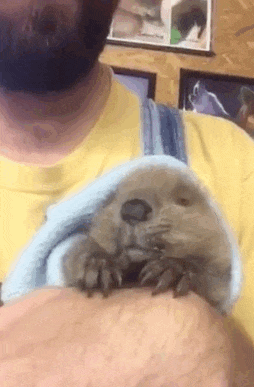Yesterday  I received an email about beavers in New Jersey, and a distress call about beavers in Eugene Oregon. Coming a day after my beaver good wishes from New Hamshire, I can only conclude that Worth A Dam is the nation’s number one resource for beaver advocacy.
I received an email about beavers in New Jersey, and a distress call about beavers in Eugene Oregon. Coming a day after my beaver good wishes from New Hamshire, I can only conclude that Worth A Dam is the nation’s number one resource for beaver advocacy.
My email from Eugene included this video from Patricia and Greg McPherson concerned about the Island Lakes beavers in GoodPasture Island Oregon.
I put her in touch with Leonard Houston of the Beaver Advocacy Committee, Kaegen Scully-Englemeyer of the Welands Conservancy and Jacob Shockley of Beaver State Wildlife Solutions. I’m sure between the three of them those beavers will have a fighting chance. She wrote a nice thank you note that I thought I’d share to draw attention to a newish resource I put together while the beaver mania talk was still fresh in my mind. Look to your left and up on the screen for the link.
I watched your ‘Our Story” ….VERY HEARTWARMING, FUNNY AND EDUCATIONAL…..KUDOS! I’ve passed it on to city of Eugene, ODFW and others. That initial image of the beaver setting up shop in downtown….very risky, funny and ultimately—thanks to you——A VERY POSITIVE OUTCOME!
Thank you for what you do- patricia
Good luck Patricia! Public interest makes a huge difference in beavers lives and they are lucky to have yours!
Time for some adorable news from WildHeart Ranch in Oklahoma who didn’t even know about this story until I posted it on FB and tagged them. It’s a shame beaver orphans are so dam adorable, maybe if they were hideous and terrifying the world would make fewer of them?
 Rescuers Wait For Sleepy Baby Beaver To Wake Up For His Breakfast
Rescuers Wait For Sleepy Baby Beaver To Wake Up For His Breakfast
 “Good morning,” Dan at Wild Heart Ranch, a wildlife rescue and rehabilitation center in Claremore, Oklahoma, said in a Facebook video on Friday. “I promised everybody I would send a morning video.”
“Good morning,” Dan at Wild Heart Ranch, a wildlife rescue and rehabilitation center in Claremore, Oklahoma, said in a Facebook video on Friday. “I promised everybody I would send a morning video.”
The star of the video is a very sleepy baby beaver named Rocky. And Dan is using the time while Rocky is still groggy to update all his fans.
“Here he is waking up for his morning breakfast,” Dan explained. “Beavers are kind of temperamental. Rocky doesn’t want to eat yet because he’s not fully awake.”
Not cute enough for you? Check your pulse. You may be dead. Can you hear the awww noises coming out of your mouth? Hmm, watch Annette feed the little sleepyhead just to be sure before we call the coroner. Any spare change you might want to send their way will be put to good use. Remember this is Oklahoma and teach folks to care for Nature is important.
Now for our own local interests here at home, Jon saw Mom and Dad again last night. She wasn’t nearly as snugly as the day before and barked at Dad wen he wanted to cuddle. Which any just-delivered or about-to-deliver mom can understand. Still she looks great and she’s OURS.





 Bob Paine, an ecologist who conducted seminal experiments along the coast of Washington state in the 1960s, pulling starfish from the rocks and tossing them back into the ocean to demonstrate the consequences of disrupting an ecosystem with the removal of a single “keystone” species, died June 13 at a hospital in Seattle. He was 83.
Bob Paine, an ecologist who conducted seminal experiments along the coast of Washington state in the 1960s, pulling starfish from the rocks and tossing them back into the ocean to demonstrate the consequences of disrupting an ecosystem with the removal of a single “keystone” species, died June 13 at a hospital in Seattle. He was 83.  His concept of “keystone” species, named after the stone at the apex of an arch that supports the other blocks in the structure, refers most strictly to predators such as sea otters, wolves and lions with outsize influence on their communities. A groundbreaking idea when Dr. Paine introduced it in the late 1960s, the “keystone” species is today a fundamental of ecology textbooks.
His concept of “keystone” species, named after the stone at the apex of an arch that supports the other blocks in the structure, refers most strictly to predators such as sea otters, wolves and lions with outsize influence on their communities. A groundbreaking idea when Dr. Paine introduced it in the late 1960s, the “keystone” species is today a fundamental of ecology textbooks.



 Our Georgia-based beaver friend BK sends this 1906 forestry text on beavers. He is looking for reference on the amount of water stored by beaver ponds, so send anything you have my way. I love reading this lost wisdom. It has so much hope for the future and a mistaken faith in our recognition of doing the right thing. Here’s the awesome conclusion:
Our Georgia-based beaver friend BK sends this 1906 forestry text on beavers. He is looking for reference on the amount of water stored by beaver ponds, so send anything you have my way. I love reading this lost wisdom. It has so much hope for the future and a mistaken faith in our recognition of doing the right thing. Here’s the awesome conclusion:



































